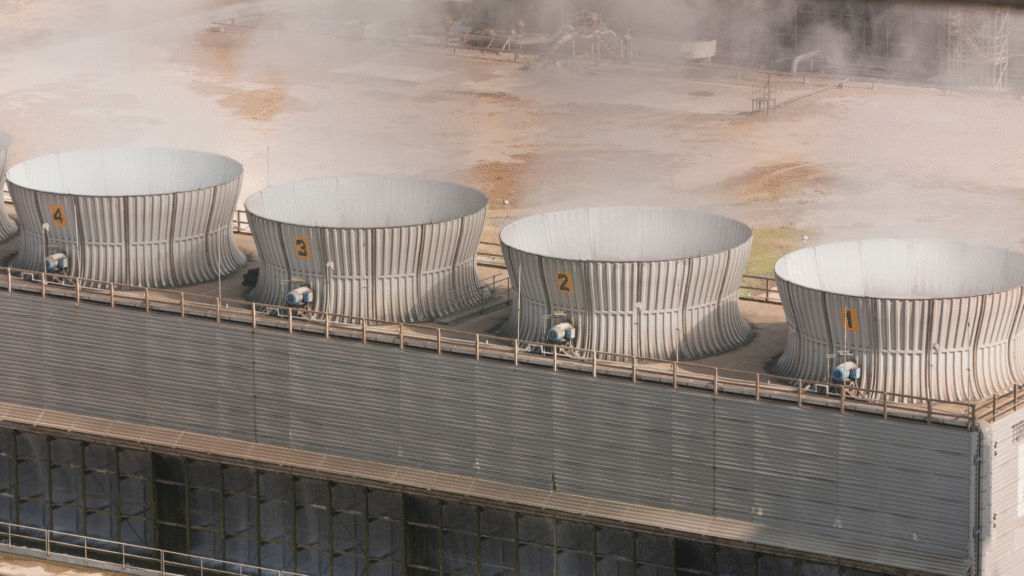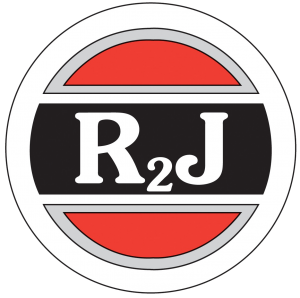Cooling Tower Drift Eliminators and Legionella Control
Sep 04, 2025What Are Cooling Tower Drift Eliminators?
Cooling towers operate by releasing heat through evaporation, but this process can unintentionally release fine water droplets into the surrounding air. These droplets, known as drift, may contain Legionella bacteria and other contaminants if the tower water is not properly treated. Left uncontrolled, drift contributes to water loss, chemical imbalance, and increased public health risk.
Cooling tower drift eliminators – sometimes called tower drift eliminators – are engineered components designed to capture these entrained droplets before they escape with the exhaust air. Made from PVC or other corrosion-resistant materials, drift eliminators use baffles or cellular structures that force air and droplets to change direction multiple times. This process removes the majority of droplets from the airflow, preventing them from leaving the tower.

How Drift Eliminators Work
The design of drift eliminators is simple but effective. Air leaving the cooling tower passes through the eliminator media, where the velocity of airflow is redirected. As droplets strike the surfaces of the eliminator blades, they coalesce and drain back into the system’s fill and water basin.
Key features include:
- Counterflow and crossflow applications: Different drift eliminator configurations are designed to match cooling tower orientation and airflow patterns.
- PVC construction: Lightweight, durable, and resistant to scaling and fouling.
- Cellular form: Multiple redirections of airflow maximize droplet capture while minimizing resistance.
By capturing droplets efficiently, drift eliminators maintain water quality, reduce unnecessary water and chemical loss, and limit the impact of drift on both system performance and the environment.
Why Drift Control Matters
Beyond efficiency, drift eliminators are central to Legionella control. The droplets they capture are the same aerosols that can transmit Legionnaires’ disease if contaminated. Properly maintained eliminators, paired with effective water treatment and Water Management Plans, directly reduce the risk of contaminated aerosols leaving the cooling tower.
For facility teams, drift eliminators aren’t just a design feature – they’re a frontline defense in protecting water systems, maintaining compliance, and ensuring the safe operation of cooling towers.
Impact on Water Quality, Compliance, and Public Health
How Drift Affects Water Quality
Every cooling tower depends on a delicate balance of water chemistry. When drift is uncontrolled, the loss of water droplets means more than wasted water – it removes chemicals, scale inhibitors, and corrosion control products along with it. Over time, this loss leads to:
- Reduced water quality as treatment chemicals become unbalanced
- Scaling and corrosion inside the tower from untreated fill and basins
- Higher operating costs as facilities must add extra water and chemicals to maintain balance
Even small amounts of entrained droplets leaving a tower can have a measurable impact on water use, efficiency, and cost.
Compliance and Legionella Control
Beyond efficiency, drift eliminators are a compliance requirement. Aerosolized droplets from cooling towers are a prime pathway for the spread of Legionella bacteria, which can cause Legionnaires’ disease when inhaled. Public health agencies and the World Health Organization have flagged cooling towers as a prime example of where outbreaks can originate.
Well-designed and maintained drift eliminators capture droplets before they exit with the exhaust air, reducing both loss and public health risk. When paired with proper treatment and Legionella Prevention Plans, they form a key part of a broader water safety strategy.
Connection to Water Management Plans
In many jurisdictions, facility operators are expected to maintain documented water management programs. These plans outline how the team will:
- Inspect and maintain cooling tower drift eliminators
- Monitor for Legionella risk
- Document corrective actions if fouling or structural issues are found
- Demonstrate ongoing commitment to compliance with public health codes
A facility’s Legionella Risk Assessment often includes evaluating the condition and placement of drift eliminators, since damaged or fouled eliminators increase increased risk of contaminated aerosols escaping the system.
The Bigger Picture: Public Health and Safety
The impact of drift control extends far beyond chemical balance. Every escaped droplet is a potential vehicle for pathogens, especially in large buildings where cooling towers sit close to air intakes or high-traffic areas. Eliminators that are designed and maintained properly lower the chance of droplets carrying bacteria into the environment – a direct line of defense against outbreaks.
When operators ignore or delay drift control, they put their system, their budget, and their people at risk. That’s why facilities across healthcare, higher education, and commercial real estate rely on partners like R2J to align cooling tower maintenance with compliance, safety, and effective management.
Best Practices for Drift Eliminator Maintenance
Even the best drift eliminators won’t protect a cooling tower if they’re neglected. Routine inspection and maintenance are key to keeping them effective. Facility teams should:
- Inspect quarterly: Look for cracks, warping, or buildup on PVC eliminators.
- Clean during shutdowns: Remove scale, organic matter, or debris that can block airflow and reduce performance.
- Verify fit and direction: Misaligned panels leave gaps where water droplets can escape.
- Replace as needed: Aging eliminators may lose structural integrity, raising Legionella risk and efficiency losses.
Well-maintained eliminators help ensure every droplet captured returns to the system’s fill and basin, minimizing both water loss and health hazards.
Partnering with Experts for Compliance
Cooling tower drift eliminators are one part of a larger strategy. They work in tandem with water treatment, routine monitoring, and documented water management programs. For facility managers, the challenge is ensuring every part of that system – from chemistry to physical infrastructure – is aligned.
That’s where R2J comes in. Our team delivers end-to-end support through:
- Legionella Risk Assessments
- Legionella Prevention Plans
- Water Management Plans
- Legionella Remediation
- Ongoing Legionella Compliance Services
By combining engineering controls like eliminators with expert oversight, you can reduce risk, safeguard water quality, and meet compliance with confidence.
Contact R2J today to connect with specialists who understand how to integrate drift control into a comprehensive cooling tower safety strategy.
Frequently Asked Questions (FAQ)
What are cooling tower drift eliminators?
Drift eliminators are components installed in a cooling tower that capture and return water droplets carried with exhaust air. They reduce drift emissions, conserve water, and limit the release of aerosols that could carry contaminants like Legionella.
How do drift eliminators improve water quality?
By capturing droplets before they leave the cooling tower, eliminators prevent chemical and treatment losses. This keeps water chemistry more stable, reduces scaling and corrosion, and lowers the cost of make-up water and chemical replacement.
Do drift eliminators help control Legionella risk?
Yes. Legionella bacteria can spread through aerosolized water droplets. Well-maintained drift eliminators reduce the number of droplets released into the air, helping facilities lower the risk of Legionnaires’ disease outbreaks.
How often should drift eliminators be inspected or replaced?
Inspect quarterly. Replace if eliminators are cracked, warped, or fouled with scale or debris. Damaged eliminators reduce effectiveness and increase water loss and compliance risk.
Are drift eliminators required for compliance?
In many regions, cooling towers fall under public health codes that include drift control. Properly designed and maintained eliminators are often part of documented water management programs and Legionella compliance requirements.

